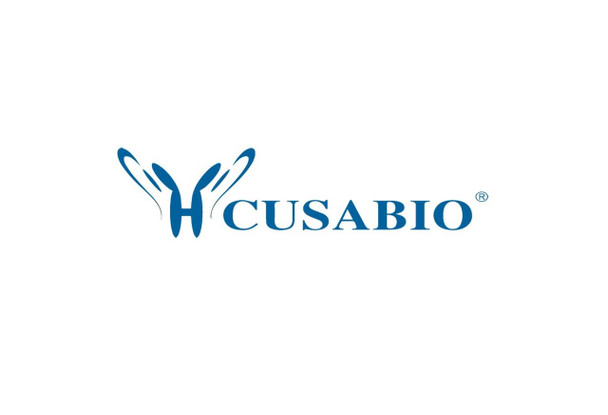Cusabio Human Recombinants
Recombinant Human C-C motif chemokine 16 (CCL16) | CSB-EP004779HU
- SKU:
- CSB-EP004779HU
- Availability:
- 13 - 23 Working Days
Description
Recombinant Human C-C motif chemokine 16 (CCL16) | CSB-EP004779HU | Cusabio
Alternative Name(s): Chemokine CC-4 ;HCC-4;Chemokine LEC;IL-10-inducible chemokine;LCC-1;Liver-expressed chemokineLymphocyte and monocyte chemoattractant ;LMCMonotactin-1 ;MTN-1NCC-4;Small-inducible cytokine A16
Gene Names: CCL16
Research Areas: Immunology
Organism: Homo sapiens (Human)
AA Sequence: QPKVPEWVNTPSTCCLKYYEKVLPRRLVVGYRKALNCHLPAIIFVTKRNREVCTNPNDDWVQEYIKDPNLPLLPTRNLSTVKIITAKNGQPQLLNSQ
Source: E.coli
Tag Info: N-terminal 6xHis-SUMO-tagged
Expression Region: 24-120aa
Sequence Info: Full Length of Mature Protein
MW: 27.2 kDa
Purity: Greater than 90% as determined by SDS-PAGE.
Relevance: Shows chotactic activity for lymphocytes and monocytes but not neutrophils. Also shows potent myelosuppressive activity, suppresses proliferation of myeloid progenitor cells. Recombinant SCYA16 shows chotactic activity for monocytes and THP-1 monocytes, but not for resting lymphocytes and neutrophils. Induces a calcium flux in THP-1 cells that were desensitized by prior expression to RANTES.
Reference: Genomic organization of the genes for human and mouse CC chemokine LEC.Fukuda S., Hanano Y., Iio M., Miura R., Yoshie O., Nomiyama H.DNA Cell Biol. 18:275-283(1999)
Storage: The shelf life is related to many factors, storage state, buffer ingredients, storage temperature and the stability of the protein itself. Generally, the shelf life of liquid form is 6 months at -20?/-80?. The shelf life of lyophilized form is 12 months at -20?/-80?.
Notes: Repeated freezing and thawing is not recommended. Store working aliquots at 4? for up to one week.
Function: Shows chemotactic activity for lymphocytes and monocytes but not neutrophils. Also shows potent myelosuppressive activity, suppresses proliferation of myeloid progenitor cells. Recombinant SCYA16 shows chemotactic activity for monocytes and THP-1 monocytes, but not for resting lymphocytes and neutrophils. Induces a calcium flux in THP-1 cells that were desensitized by prior expression to RANTES.
Involvement in disease:
Subcellular Location: Secreted
Protein Families: Intercrine beta (chemokine CC) family
Tissue Specificity: Mainly expressed in liver, also found in spleen and thymus. Highly expressed in LPS- and IFN-gamma-activated monocytes, weakly in some lymphocytes, including natural killer cells, gamma-delta T-cells, and some T-cell clones.
Paythway: Chemokinesignalingpathway
Form: Liquid or Lyophilized powder
Buffer: If the delivery form is liquid, the default storage buffer is Tris/PBS-based buffer, 5%-50% glycerol. If the delivery form is lyophilized powder, the buffer before lyophilization is Tris/PBS-based buffer, 6% Trehalose, pH 8.0.
Reconstitution: We recommend that this vial be briefly centrifuged prior to opening to bring the contents to the bottom. Please reconstitute protein in deionized sterile water to a concentration of 0.1-1.0 mg/mL.We recommend to add 5-50% of glycerol (final concentration) and aliquot for long-term storage at -20?/-80?. Our default final concentration of glycerol is 50%. Customers could use it as reference.
Uniprot ID: O15467
HGNC Database Link: HGNC
UniGene Database Link: UniGene
KEGG Database Link: KEGG
STRING Database Link: STRING
OMIM Database Link: OMIM









